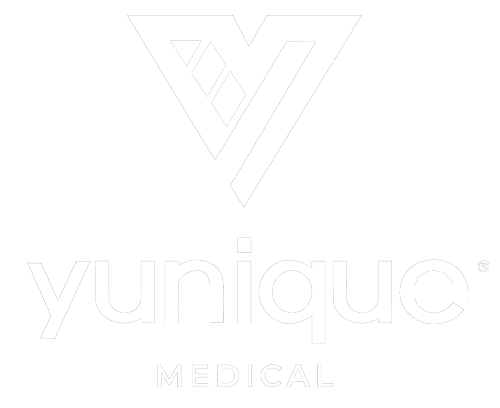Research Suggests Hormone Patches as Safe Alternatives to Oral HRT for Heart Health
As the search for a safer alternative to oral hormone replacement therapy continues, hormone patches are becoming increasingly important.
Amid concerns about severe heart-related side effects linked to hormone pills, this exploration delves into the urgent need for safer options.
Learn how hormone patches, offering a transdermal delivery system, might be the key to a safer and more heart-friendly approach to HRT.

Transdermal Vs. Oral HRT: Which One is Safer for Those With Heart Problem Risks?
Historical Concerns About Cardiovascular Risks With HRT
Historically, hormone replacement therapy (HRT) was regarded as a strategy to alleviate menopausal symptoms. However, the landscape changed dramatically following the Women’s Health Initiative (WHI) trial in 2002.
The study showed alarming findings, including an increased occurrence of myocardial infarction and thromboembolic events among over 16,000 HRT users who had been on estrogen and progestin from 1993 to 1998.
The impact of the WHI results on HRT use was profound, with a sharp decline from 12% in 2004 to 5% in 2010.
These statistics underscored the heightened concern regarding the cardiovascular risks associated with traditional HRT, leading many women to seek safer alternatives.
So here it is – transdermal hormone patches.
What Are Hormone Patches for Menopause?
Hormone patches, a form of transdermal HRT, are a new method to address the challenging symptoms of menopause. Like other types of HRT, they are specifically designed for women experiencing menopausal symptoms such as:
- Hot flashes
- Night sweats
- Vaginal dryness
- Mood swings
Hormone patches deliver hormones through the skin, hence the term “transdermal” (where “trans” means “through” and “dermal” refers to the dermis or skin).
There are two primary types of hormone patches:
- Estrogen (estradiol) patch
- Combined estrogen (estradiol) and progestin (norethindrone) patch
Hormone patches offer an alternative to oral HRT, presenting a more targeted and safer solution. Hormone patches facilitate the absorption of hormones into the bloodstream, offering relief from menopausal symptoms without needing daily pills.

How Do Hormone Patches Work?
The mechanism of action of hormone patches involves a carefully calibrated delivery of hormones through the skin. Dosage, frequency, duration of use, and the site of application are critical components of this process, typically as follows:
- Dosage: 0.025 mg/0.0375mg/0.05 mg
- Frequency: once or twice a week; sequential use rotating 3 weeks with hormone patches and 1 week without
- Duration of use: between 2 and 5 years (one may need to take it for longer if the benefits still outweigh the risks)
- Site of application: lower stomach or upper buttock area
Users apply the patch to clean dry skin, usually on the abdomen or buttocks, and replace it every few days. Once applied, the hormones are absorbed through the skin by blood vessels and transported throughout the body.
This transdermal method provides a sustained and steady release of hormones, effectively managing menopausal symptoms.
What Makes Hormone Patches Safer Than Oral HRT?
The primary safety advantage of hormone patches is avoiding the first gastrointestinal and hepatic passage, a characteristic unique to oral HRT.
When hormones are administered orally, they enter the digestive system, where they are metabolized in the liver before reaching the bloodstream. This process can lead to an increased risk of side effects and complications, including:
- Nausea
- Upset stomach
- Vomiting
- Indigestion
- Swelling
- Headaches
- Fluid retention
- Increased or reduced appetite
In contrast, transdermal HRT delivers hormones directly into the bloodstream through the skin, sidestepping the risks associated with the digestive system and liver metabolism.
Thus, hormone patches have become a preferred choice for many women seeking relief from menopausal symptoms without compromising their overall health.
Hormone Patches Vs. Oral in Relation to Cardiovascular Risks
Background
While studies agree on the beneficial effects of HRT in general, only a limited number compared the risk of cardiovascular disease between transdermal and oral HRT.
In this context, a recent study by Goldštajn M. S. et al. published in Springer is one of the few research papers that shed light on the safety profile of transdermal and oral administration routes for HRT in a back-to-back comparison.
Hypothesis
The study found that oral HRT is associated with an increased risk of clot or stroke due to the metabolism of hormones in the liver, which produces clotting (procoagulant) factors.
This elevated venous thromboembolism (VTE) risk is considered a significant clinical difference between the two administration routes, supporting the notion that transdermal HRT, delivered through patches, is safer regarding cardiovascular risks.
Methods
By reviewing 10 previous studies comparing transdermal vs. oral HRT, Goldštajn M. S. et al. investigated the impact of HRT on the cardiovascular system based on factors such as:
- Coagulation cascade
- Inflammatory parameters
- Lipid composition
- Artery thickness
- Blood pressure
- Atherosclerosis progression
Results
There were only 2 studies that found no difference between the two administration routes. On the other hand, many authors claimed that transdermal HRT is a safer choice, particularly for women who are more susceptible to VTE.
The analysis suggests that factors such as estrogen administration route, concomitant progestin type, and dosage play pivotal roles in determining thrombotic risk.

Can You Take HRT if You Have a Risk of Blood Clots?
Many women are incorrectly advised that HRT is a no-go if they have a history of blood clots or have a condition that elevates clotting risks.
However, as shown in the findings above, the increased risk of blood clots is specific to oral HRT, and transdermal HRT does not pose an additional risk.
Understanding this crucial distinction is essential for informed decision-making about HRT.
Women with a history of blood clots or a predisposition to clotting issues can still benefit from HRT by opting for transdermal delivery methods, which provide a safer alternative without compromising cardiovascular health.
The Initiation Time of HRT is Crucial
Starting HRT at a specific time is vital to avoid the risk of cardiovascular complications.
A study on the time window of opportunity for reducing heart disease emphasizes the relationship between the age at the onset of HRT and its impact on acute coronary disease risk. The study reveals a 44% decrease in acute coronary disease risk in women younger than 60 years who commence HRT early after menopause.
However, in women over 60 years, the study indicates no benefits for acute coronary disease prevention but an increased risk of stroke.
These findings underscore the importance of an early start to HRT after menopause to achieve cardiovascular benefits.
Bottom Line
Hormone patches for menopause represent a significant advancement in HRT, offering a targeted and safer approach compared to oral forms. By bypassing the gastrointestinal and hepatic route, these patches provide effective relief from menopausal symptoms and reduce the risk of side effects, particularly cardiovascular complications.
References
Goldštajn M. S. et al. (2022). Effects of Transdermal Versus Oral Hormone Replacement Therapy in Postmenopausal Women: A Systematic Review. Springer Link.
Yunique Medical provides FUNCTIONAL MEDICINE for optimized health and performance. We offer customized, scientifically advanced treatments to create a new state of human thriving. Why be ordinary when you can be optimal?
HUMAN 2.0 begins here!
Contact us to schedule your FREE consultation at one of our three locations in Florida – Ocala, Fruitland Park (The Villages), and Daytona.
UP NEXT:

